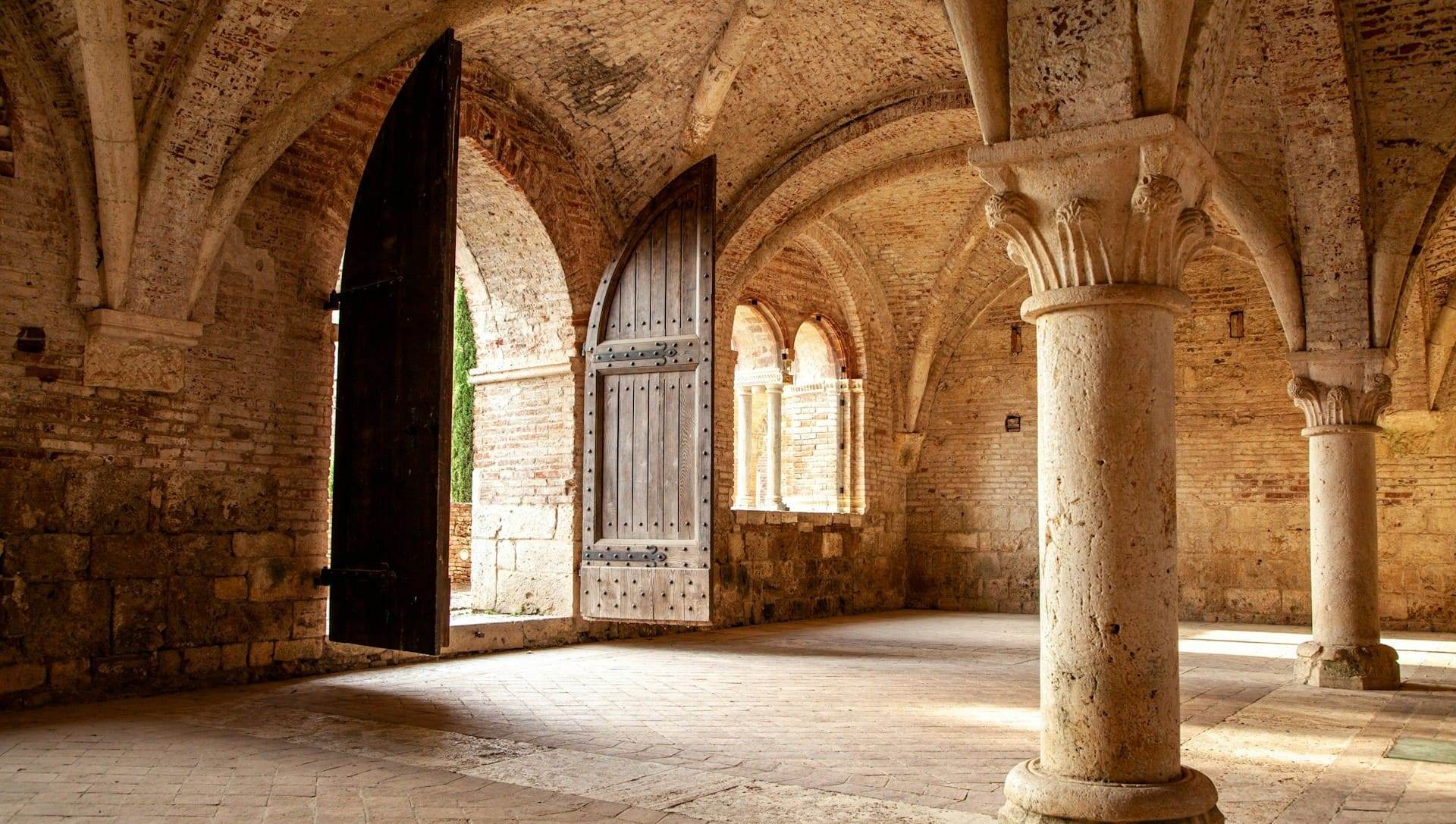The Name of the Rose
April 2026 | ||||||
|---|---|---|---|---|---|---|
Mo | Tu | We | Th | Fr | Sa | Su |
THE NAME OF THE ROSE
Opera in two acts
Libretto by Francesco Filidei and Stefano Busellato with the collaboration of Hannah Dübgen and Carlo Pernigotti, freely adapted from the novel of the same name by Umberto Eco
Music by Francesco Filidei
World premiere Milan, Teatro alla Scala, 27 April 2025
Program and cast
Conductor: Tito Ceccherini
Director: Damiano Michieletto
Set Design: Paolo Fantin
Costumes: Carla Teti
Choreography: Erika Rombaldoni
Dramaturgy: Mattia Palma
Lighting: Fabio Barettin
Main Characters and Performers:
Adso of Melk: Anna Goryachova
William of Baskerville: Lucas Meachem
The Village Girl / Statue of the Virgin: Katrina Galka
Jorge of Burgos: Luca Tittoto
Bernardo Gui: Daniela Barcellona
Abbone of Fossanova: Fabrizio Beggi
Salvatore: Fabio Maria Capitanucci
Remigius of Varagine: Giorgio Berrugi
Malachia: Owen Willetts
Severinus of Sant’Emmerano: Giulio Pelligra
Berengar of Arundel / Adelmo of Otranto: Filippo Mineccia
Venanzio / Alborea: Leonardo Cortellazzi
A Cook / Girolamo, Bishop of Caffa: Andrea Porta
Orchestra, Chorus, Children’s Choir, and Technical Staff of the Carlo Felice Opera of Genoa
Chorus Master: Claudio Marino Moretti
Children’s Choir Master: Gino Tanasini
Production co-produced by Fondazione Teatro alla Scala, Opéra National de Paris, and Fondazione Teatro Carlo Felice di Genova
The program may be subject to changes; it is recommended to always refer to official communications issued by the Organizer.
Carlo Felice Theater
Built on the area of Carlo Felice, the new theater, built by Aldo Rossi, recovers an idea already present in Paul Chessa projects and Carlo Scarpa: the creation of a piazza covered with 400 square meters, where the theater it was the ideal link between Galleria Mazzini and Piazza De Ferrari. Distant instead from an architectural point of view are the same Galleria Mazzini and the theater. the square is an open foyer; the walls are covered with stone slabs, and are enriched with columns and metal beams. There are two requirements that the architects wanted to keep in mind in the implementation of the new Carlo Felice theater: first, the need to rebuild it exactly where it was and secondly the desire to equip the new facility with the latest technology. From the latter need arises the imposing fly tower about 63 meters high. In practice the old theater work of Barabino remain the columns, the portico, the Latin inscription and the terrace that overlooks Via XXV Aprile which is accessed by one of the foyer; the current structure is very compact and geometric, the fly tower is a very linear in height developed rectangular, adorned only by a cornice.The auditorium, the foyer and services for the public are contained in a smaller box, where they emphasize the porch and the porch. As for the construction of the new theater are the stone were used for the exterior, plaster and iron, for the interior marble and wood. It is durable material that suggests an image of eternity, security and survival of the building over time. From the covered square, descending a staircase, you enter a room with a capacity of about 200 seats. Equipped with a small stage and independent from the rest of the theater, the hall hosts conferences, lectures and musical events. The interior of the theater entrance wide staircase leads to the closet and still climbing, the first foyer which has an area of 660 square meters and is decorated with frescoes and tapestries. the lantern A characteristic feature of the new Carlo Felice is the lantern visible in the foyer overlooking the lobby; it's a kind a light cone that runs through the building in all its height and it runs through all the plans, bringing the light from the roof to the indoor square. The tower Absolutely unique is the scenario in which they operate the technical units; right in the scenic tower, which houses the machine to move the shows, come together in a delicate balance human labor and sophisticated gear.In fact, the theater has four stages, a main stage, a back stage behind the first two stages and less aligned with each other and managed by integrated electronic and computerized. These scenic handling facilities, computerized lighting, sophisticated booths director for filming and acoustics among the best in Italy are among the features that make the Carlo Felice a factory of emotions among the most important in Italy.

 EN
EN DE
DE IT
IT FR
FR ES
ES RU
RU JP
JP RO
RO
 Seating plan
Seating plan 